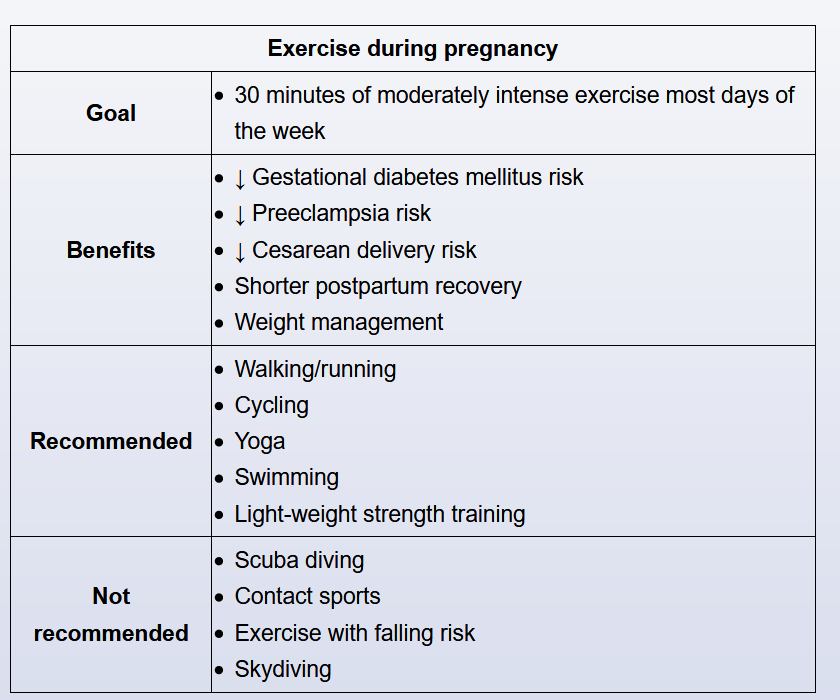excercise in prenancy
- related: OBGYN
- Recommended exercises:
- 30 minutes of moderately intense aerobic exercise (the patient should be able to converse while exercising) on most or all days of the week
- Patients who are already conditioned for long-duration, high-intensity exercise can safely continue their regimen during pregnancy.
- light weight (10lb) resistance training is safe
- Not recommended exercises
- pregnancy shifts center of gravity, more risk of falling
- avoid high risk of fall (gymnastic, skiing, horseback riding)
- avoid contact sports
- can swim but not scuba dive due to risk of air embolus formation and risk of fetal decompression sickness
- training that involves marked straining, heavy resistance, or Valsalva maneuver is not recommended as it may decrease uteroplacental blood flow temporarily.

Exercise contraindicated in certain at-risk patient populations. Exercise should be avoided by:
- Patients at risk for preterm delivery
- Cervical insufficiency
- Preterm labor during current pregnancy
- Preterm premature rupture of membranes
- Patients at risk for antepartum bleeding
- Placenta previa
- Persistent second- or third-trimester bleeding
- Patients with an underlying condition that could be exacerbated by exercise
- Severe anemia
- Hypertensive disorders of pregnancy (eg, preeclampsia)
- Restrictive lung disease
- Severe heart disease
Cervical insufficiency, a structural cervical weakness associated with painless second-trimester pregnancy loss, is managed with placement of a cerclage. A cerclage is a permanent suture placed around the cervix to reinforce it and help prevent preterm delivery. Patients with a cerclage and history of cervical insufficiency should avoid exercise during pregnancy to minimize the risk of preterm delivery.